custom framing styles » French picture frames
Few countries are as important to the development of picture frame styles as France in the 17th and 18th centuries. During the mid-1600s, France became the dominant political power and artistic center of Europe. With much of the country’s cultural influence (including the names of its frame styles) coming directly from its kings – each emphasizing a policy of le dernier cri (something new) “in all matters of style, including the shapes and decorative elements of picture frames”[1] – French frames came to define the luxury and extravagance of the Baroque and Rococo movements.
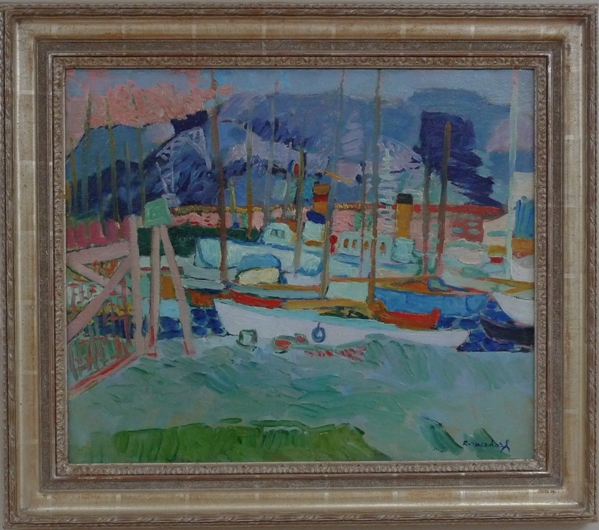
Louis XIII (1601 – 1643) frames were the first style of French picture frame to gain wide popularity throughout Europe. Heavily inspired by the Italian baroque movement (Louis’ mother, Marie de Medici, had helped to bring Italian craftsmen to France during her son’s reign), many Louis XIII frames consist of continuous hand-carved leaf, branch, and flower ornamentation in shallow relief. Later, transitional versions feature raised corner and center areas of carved flowers.
French craftsmen also became renowned for their artistic abilities during Louis XIII’s reign. Everyone had a specialty, usually developed in apprenticeships and workman guilds. French frame makers improved on older design forms with stunning success. For example, artisans in France were revered for their re-cut gesso techniques – a hallmark of French style in frame and furniture making going forward.

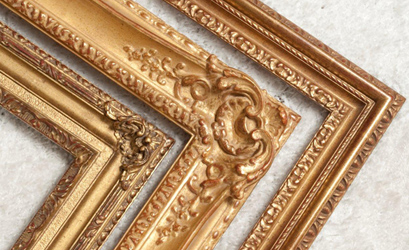
Known as the Sun King, Louis XIV (1638 – 1715) ruled France during the height of its imperial power and influence. Unsurprisingly, art and architecture under Louis XIV evolved into more complex and ornate designs – a visual reminder of the country’s wealth and power. French picture frames, also generally became more elaborate, especially beyond the usual rectangular boundaries. A typical Louis XIV frame consists of straight moulding with curved vine and scroll patterns carved throughout, as well as solid pronounced corner and center ornaments (or cartouches) of flowers, leaves, and other foliage.
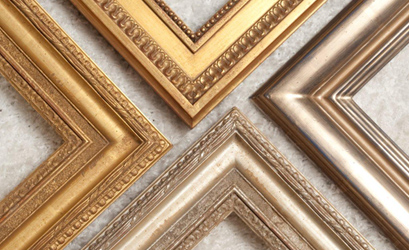
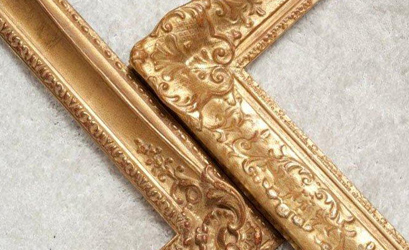
By the 1720s (the beginning of Louis XV’s reign) decorative arts and architecture in France were swept up in the Rococo movement. Artisans began experimenting with organic asymmetrical designs. Frame makers followed suit, producing the elaborate Louis XV frame style. This particular period produced ornate frames that were regarded as a piece of sculpture or wall furniture. Due to the sophistication and complexity of their design, the patterns and intricacies of these frames were dependent on the owner’s status, hierarchy, and personal wealth. With outstanding gesso texturing, complex patterning of carved forms, pierced carving, and dazzling gilded finishes, Louis XV frames provide perhaps the most extravagant example of French picture frames.
A transition away from such frivolity of the Rococo style occurred around the 1760s during the rule of Louis XVI. This period, known as Neoclassicism, stressed a revival of classical themes of antiquity and shied away from the excessive ornamentation of previous French frame designs. Louis XVI frames most typically had a square entablature, a guilloche back, and decoration that included classical symbols such as acanthus leaves, bay leaves, and pearls. The unadorned molding and purity of line was quite the contrast from the embellished ornamentation, and excessive cartouches and fluting of their previous counterparts.
[1] Deborah Davis, The Secret Lives of Frames: One Hundred Years of Art and Artistry (New York: Filipacchi Publishing, 2007) 82.
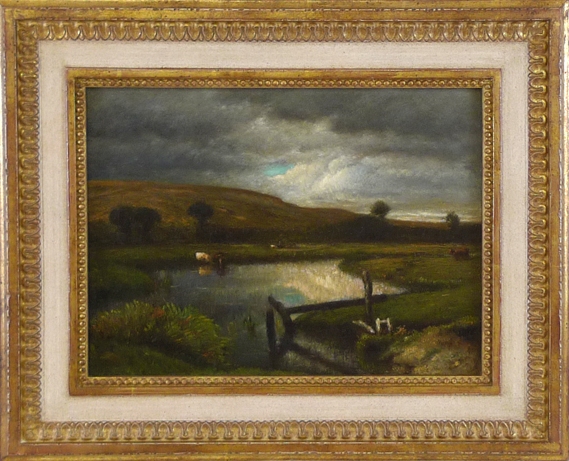
French Antique Reproduction Picture Frame-Louis 16
Landscape by Pierre Étienne Théodore Rousseau (1812 – 1867) Oil On Canvas
Private collection, Byfield, MA
MAIN WEBSITE: https://www.OliverBrothersOnline.com
Oliver Brothers Custom Framing 117 Elliott Street, Beverly, MA 01915 617.536.2323

